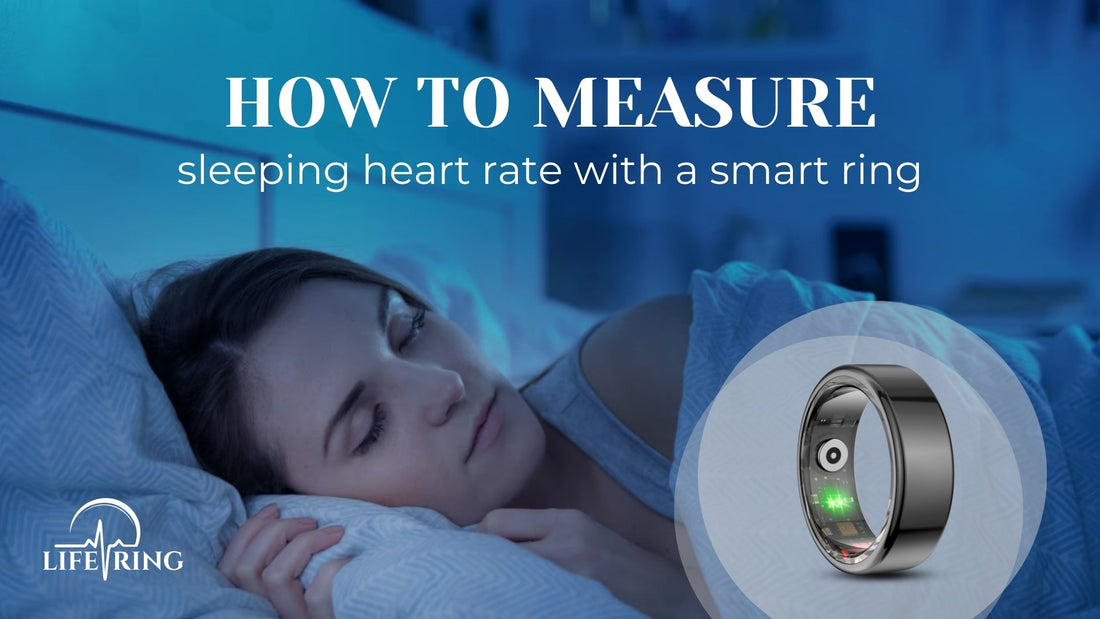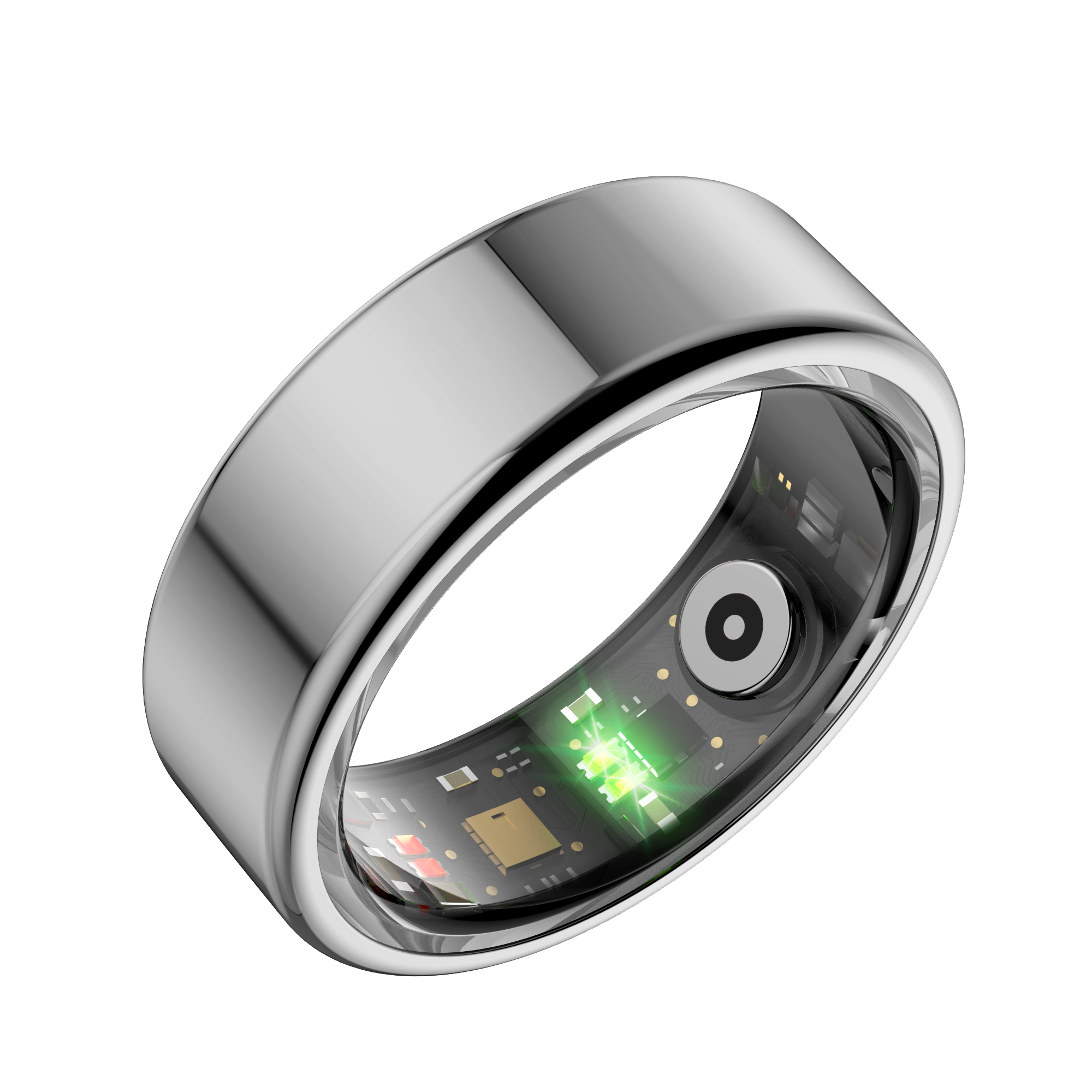
How to Measure Sleeping Heart Rate with a Smart Ring
Share
Summary
-
Life Ring is a smart ring that tracks your sleeping heart rate effortlessly, unlike bulky smartwatches.
-
Normal sleeping heart rate varies by age, with adults typically ranging from 50-90 bpm.
-
Life Ring measures heart rate, HRV, blood oxygen, and sleep stages to provide valuable health insights.
-
Factors affecting RHR include fitness level, stress, hydration, and overall sleep quality.
-
Healthy habits like regular exercise, stress management, and good sleep hygiene can improve your heart rate.
-
Life Ring is lightweight, subscription-free, and water-resistant, making it an easy way to monitor heart health.
If you want to track your heart rate while you sleep, a smart ring is one of the best ways to do it. Unlike bulky smartwatches or chest straps, a smart ring is lightweight, comfortable, and tracks your heart rate effortlessly while you rest.
With Life Ring, you can monitor your sleeping heart rate, analyze trends, and gain valuable insights into your overall health. But before we dive into how Life Ring works, let's first understand what a normal sleeping heart rate looks like.

What Is a Normal Sleeping Heart Rate?
Your heart rate naturally slows down when you sleep. This happens because your body is in a state of rest and recovery. The average normal sleeping heart rate varies depending on age, fitness level, and overall health.
Here’s a general breakdown of the normal sleeping heart rate by age:
-
Newborns (0-3 months): 100-180 beats per minute (bpm)
-
Infants (3-12 months): 90-160 bpm
-
Toddlers (1-3 years): 80-130 bpm
-
Children (3-10 years): 70-110 bpm
-
Teens (10-18 years): 60-100 bpm
-
Adults (18+ years): 50-90 bpm
Tracking Your RHR With Life Ring: What Does Life Ring Track?
Your resting heart rate (RHR) is the number of times your heart beats per minute while you are at rest. Tracking your RHR over time can give you insights into your heart health, stress levels, and overall fitness.
Life Ring makes it incredibly easy to track your sleeping heart rate. Here’s what Life Ring measures while you sleep:
-
Heart Rate Variability (HRV): Analyzes the time between heartbeats to assess stress and recovery.
-
Blood Oxygen Levels: Helps detect breathing patterns and potential sleep issues.
-
Sleep Stages: Tracks light, deep, and REM sleep cycles.
-
Overall Activity Levels: Provides data on movement and rest periods.
Since Life Ring works automatically, you don’t have to do anything, just wear the ring, go to sleep, and check your data in the morning
Babies and Children: What Is the Normal Sleeping Heart Rate?
Heart rates can change as children grow. Babies and young children naturally have higher heart rates compared to adults because their hearts are smaller and beat faster.
If you’re a parent using a smart ring to track your child’s sleep, keep in mind that:
-
Newborns may have heart rates as high as 180 bpm during sleep.
-
Toddlers and young children usually settle between 80-110 bpm.
-
By the teenage years, heart rates become similar to adult ranges.
As long as your child’s heart rate stays within the expected range and there are no other concerning symptoms, variations are usually normal.

What If Your RHR Is Lower or Higher Than Usual?
Sometimes, you may notice that your resting heart rate is lower or higher than normal. This can happen due to several reasons, including:
Lower-Than-Normal RHR:
-
High fitness levels (common in athletes)
-
Deep relaxation or meditation
-
Certain medications
Higher-Than-Normal RHR:
-
Stress or anxiety
-
Dehydration
-
Poor sleep quality
-
Fever or illness
A slight variation in RHR is normal, but if you notice a sudden or extreme change, it might be a sign to pay closer attention to your health.
How to Support a Healthy Sleeping Heart Rate
If you want to maintain a healthy sleeping heart rate, here are some simple lifestyle changes that can help:
1. Improve Your Sleep Quality
-
Stick to a regular sleep schedule.
-
Avoid screens and caffeine before bed.
-
Sleep in a cool, dark room.
2. Stay Active During the Day
-
Engage in regular physical activity.
-
Avoid being sedentary for long hours.
3. Manage Stress
-
Practice deep breathing or meditation.
-
Reduce stress through hobbies and relaxation.
4. Stay Hydrated and Eat Well
-
Drink enough water throughout the day.
-
Maintain a balanced diet with heart-healthy foods.
Small lifestyle changes can make a big difference in your heart rate and overall well-being.
When to See a Doctor About Your Resting Heart Rate
While slight variations in your sleeping heart rate are normal, there are times when you might need to consult a doctor.
Signs You Should Get Checked:
-
Sudden, extreme changes in heart rate (too high or too low).
-
Irregular heartbeats or palpitations.
-
Shortness of breath or dizziness.
-
Ongoing fatigue despite good sleep.
If you experience any of these symptoms, it’s always best to speak with a healthcare professional.

Why Life Ring Is the Best Choice for Tracking Sleeping Heart Rate
Unlike bulky wearables, Life Ring is a lightweight, stylish, and advanced smart ring that tracks your heart health effortlessly.
Key Features of Life Ring:
-
Tracks heart rate, HRV, and blood oxygen
-
No monthly fees or subscriptions
-
Works even when your phone is far away
-
Water-resistant and durable
-
Comfortable to wear all night
With Life Ring, you get a complete picture of your heart health while you sleep, all with a simple, comfortable smart ring.
Final Thoughts
Your heart works around the clock,even while you sleep so why not keep an eye on it effortlessly? Life Ring makes tracking your sleeping heart rate simple, comfortable, and insightful, without the hassle of bulky wearables. It’s stylish, subscription-free, and gives you valuable health insights all from your fingertip.

